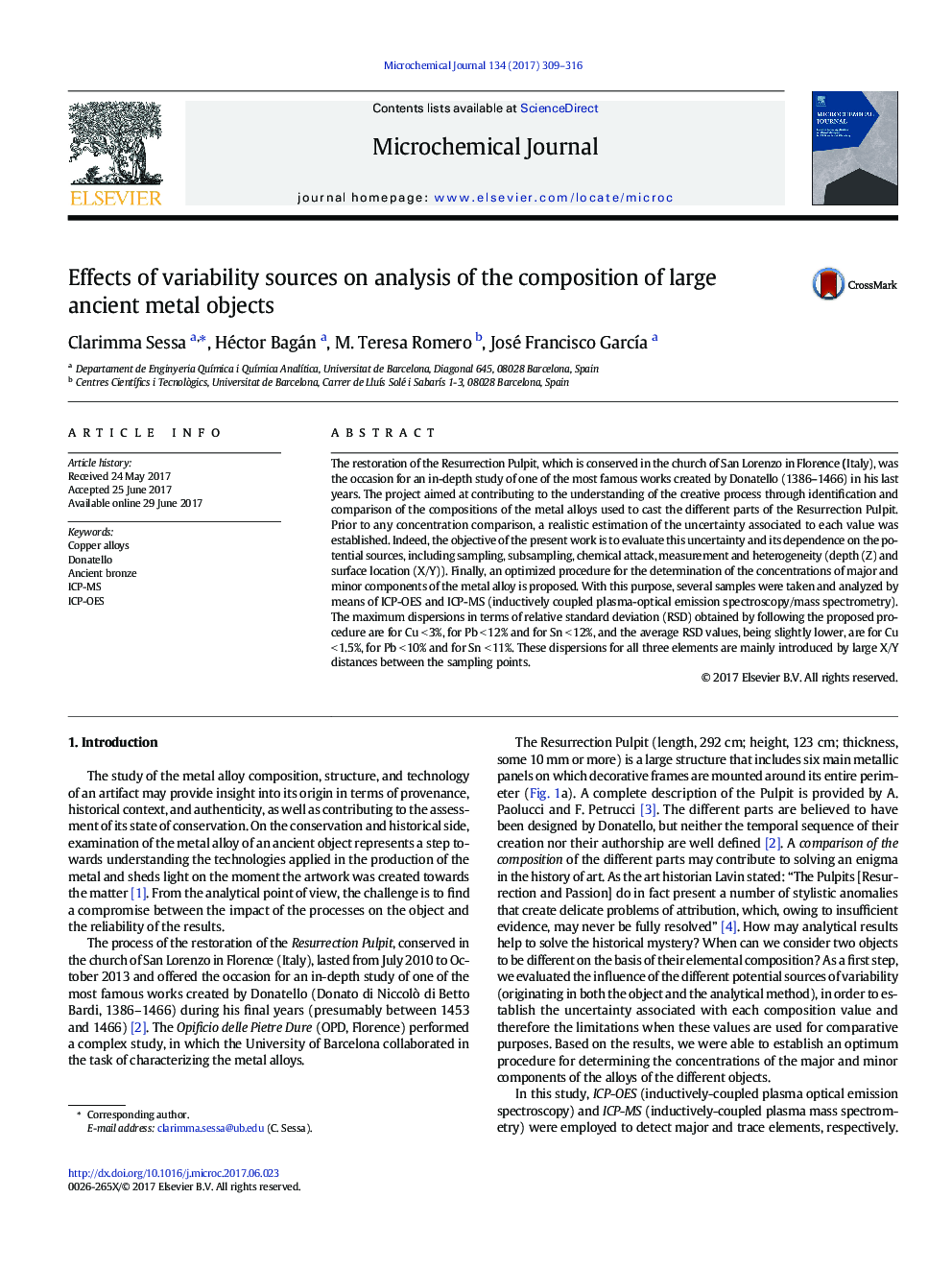| Article ID | Journal | Published Year | Pages | File Type |
|---|---|---|---|---|
| 5139132 | Microchemical Journal | 2017 | 8 Pages |
Abstract
The restoration of the Resurrection Pulpit, which is conserved in the church of San Lorenzo in Florence (Italy), was the occasion for an in-depth study of one of the most famous works created by Donatello (1386-1466) in his last years. The project aimed at contributing to the understanding of the creative process through identification and comparison of the compositions of the metal alloys used to cast the different parts of the Resurrection Pulpit. Prior to any concentration comparison, a realistic estimation of the uncertainty associated to each value was established. Indeed, the objective of the present work is to evaluate this uncertainty and its dependence on the potential sources, including sampling, subsampling, chemical attack, measurement and heterogeneity (depth (Z) and surface location (X/Y)). Finally, an optimized procedure for the determination of the concentrations of major and minor components of the metal alloy is proposed. With this purpose, several samples were taken and analyzed by means of ICP-OES and ICP-MS (inductively coupled plasma-optical emission spectroscopy/mass spectrometry). The maximum dispersions in terms of relative standard deviation (RSD) obtained by following the proposed procedure are for Cu <Â 3%, for Pb <Â 12% and for Sn <Â 12%, and the average RSD values, being slightly lower, are for Cu <Â 1.5%, for Pb <Â 10% and for Sn <Â 11%. These dispersions for all three elements are mainly introduced by large X/Y distances between the sampling points.
Keywords
Related Topics
Physical Sciences and Engineering
Chemistry
Analytical Chemistry
Authors
Clarimma Sessa, Héctor Bagán, M. Teresa Romero, José Francisco GarcÃa,
